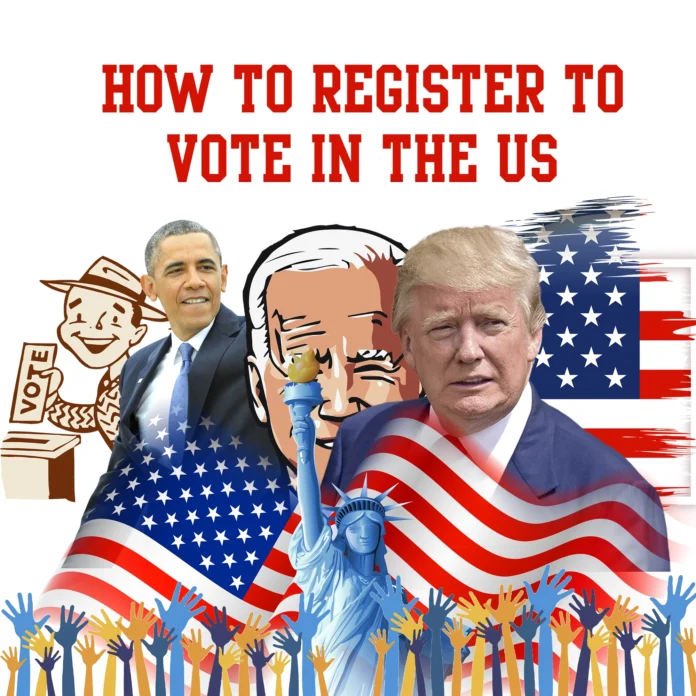One of the main duties and privileges of American citizenship is the ability to vote. Voter registration is a prerequisite for election participation. While state-specific procedures for voter registration differ, this page offers a broad summary of the procedures.
Table of Contents
ToggleVerify your eligibility:
In order to be eligible to vote in the United States, you must:
You have to be an American citizen.
On election day, you have to be at least eighteen years old.
The qualifications for residency in your state must be met.
Because of a felony conviction, you shouldn’t be behind bars at this time (state rules pertaining to felons’ voting privileges differ).
Advertisement
Registering to vote:
There are usually a few ways to register to vote:
Online Voter Registration: This option is provided by many states. To find out if this is an option, go to the website of the election administration in your state. Usually, you’ll need:
a driver’s license number or ID issued by the state.
personal data, including your name, address, and birthdate.
By Mail: The U.S. Election Assistance Commission website has a National Mail Voter Registration Form that you can download and print. Complete the form and mail it to the state-listed address. Remember that state-by-state deadlines for registration differ.
In Person: There are specific places where you can register in person, like:
municipal or state election offices.
offices of the Department of Motor Vehicles (DMV).
offices providing public aid.
military enlistment offices.
Registration Deadlines:
The dates for registration differ per state. While some jurisdictions require registration weeks in advance, others offer same-day registration. It’s crucial to confirm that you are registered in time for an impending election by consulting your state’s specific deadlines.
Advertisement
Revising Your Enrollment:
You must update your voter registration if you move, alter your name, or decide to switch political parties. Generally, this can be accomplished with the same techniques mentioned above.
How and Where Voting Is Done:
After registering, you will need to find out where and how to cast your ballot:
Voting Methods:
In-Person Voting: On election day, you can cast your ballot in person at the polling site of your choice in the majority of states. Moreover, several states allow early voting.
Absentee Voting: You might be allowed to cast an absentee ballot if you are unable to cast your ballot in person on election day. Verify the procedures set out by your state before seeking and submitting an absentee ballot.
Mail-In Voting: Voting by mail is an option in many states. Make careful to review the laws in your state on mail-in ballots and submission deadlines.
Locating the Polling Place: To ascertain the voting location, you may:
Advertisement
Visit nass.org/can-I-vote, where you can enter your state information to find your polling place.
To find out about polling places, early voting locations, and voting hours, visit the website of your state’s election administration.
Adertisement
In summary
Democracy depends on voter registration and election participation. Verify your eligibility, register as soon as possible, and become informed with your voting options. Your voice matters, so make it known whether you vote in person or by mail!
Advertisement



